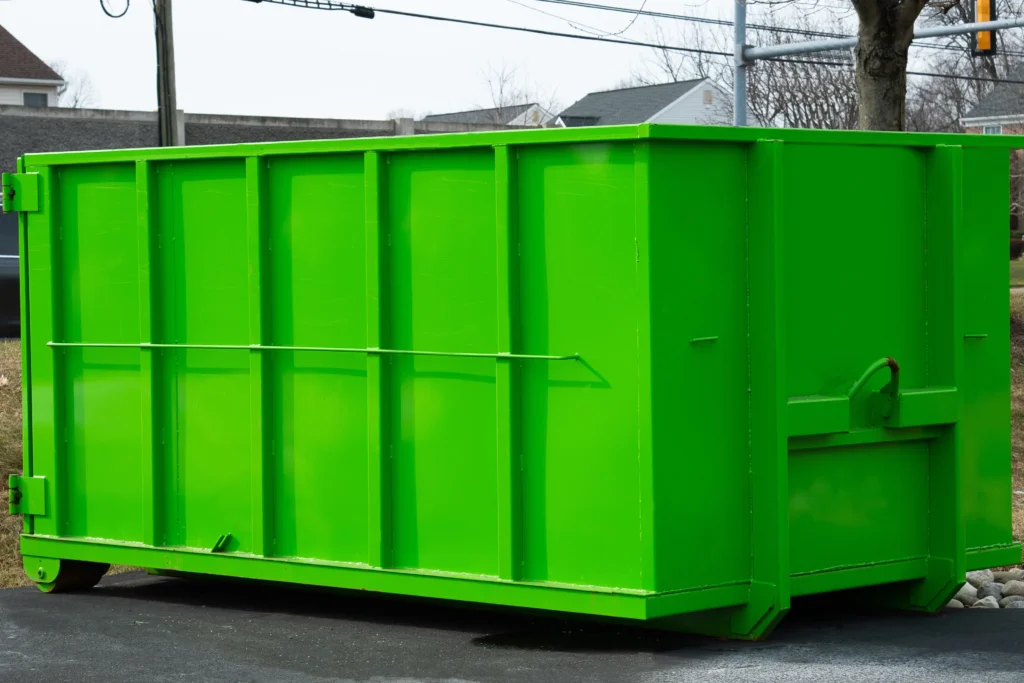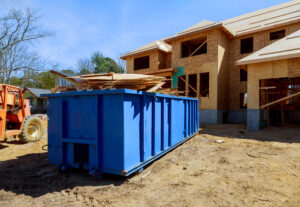Dumpster rentals come in handy where other garbage disposal methods such as normal junk bins have failed or cannot carry the bigger garbage volumes.
In addition to cost, local ordinances, location, place and space requirements, dumpster sizes top the list of the various factors to explore when renting one.
This is because the sizes advise all other factors such as cost, typical usage, capacity, placement and space requirements as well as accessibility.
Being aware of the various dumpster sizes can help you decide which one of the two dumpster sizes fits your needs. This article gives various differences between the 2-yards and 4-yards.

Dumpster Container Size Differences
Size and Dimensions
The 2-yard container stands at 6 feet in length, 3 feet in width, and 3 feet in height. The container offers a carrying capacity of waste equal to 2-cubic yards, hence their size name, 2-yards. Likewise, the 4-yards stands at 6 feet in length, 4.5 feet in width, and 4 feet in height. The waste carrying capacity is 4-cubic yards.
Typical Usage
The 2-yard containers are best suited for smaller projects that produce significantly less garbage like small commercial establishments and small residential works. For this reason, you can expect to use them for single-family unit cleanouts, minor renovations and yard makeovers. They also fit well for smaller commercial establishments like coffee shops, boutiques, and offices that give a significantly manageable waste size. They are also a common thing in events like small family parties where waste volume is manageable.
The 4-yard containers fit well for multi-family units where large home renovation and yard makeover works are going on. You can also expect to see them at medium-sized commercial establishments like restaurants, retail stores and offices that give a little bigger waste volume. They also fit perfectly for large events like weddings or community cleanups where there is more waste volume.
Capacity
If you were to measure the waste volume going into 2-yard dumpsters, it would take you 12 common trash bags of 32-gallon size to fill each container to the set limit. Since the 4-yard dumpsters double the 2-yard in terms of size, it would take you 24 common trash bags of 32-gallon size to fill each of these with waste.
Placement and Space Requirements
Dumpster size factor introduces us to another critical aspect, placement and space requirement. Provided there are no prevailing local ordinances and community restrictions, placing 2-yard dumpsters is easy, given their small sizes do not call for large placement space. For this reason, they perfectly fit well for single family-units with limited yard, driveway and alley space. Provided the law allows it, they can even be placed on the street without obstructing anyone.
Conversely, because of their bigger size, 4-yard dumpsters are a little more challenging to place. For this reason, you can expect to find them in multi-family units where heavy-duty house and yard makeover works are taking place. Their placement space requirements are a little more demanding thereby calling for larger driveways, yards and alleys. Due to their larger size, 4-yards cannot be placed on the street.
Cost
Given their smaller sizes, lack of stringent local ordinances, ease of placement and accessibility when delivering and hauling, the rental cost for the 2-yards is relatively lower than that of 4-yards. However, the dumpster will cost you a little more in the long run since it will take the waste company several rounds to the dumpsite to empty your waste. This is especially true when you have larger projects at home or you are operating a business that gives large waste volumes.
Due to their bigger sizes, 4-yards are a little more expensive to hire, given that they may require you to obtain permits before renting one. The increased price could also be from the fact that they are a little more hectic to deliver and retrieve. On the brighter side, they are a cost-conscious alternative when you have a bigger waste volume since it will take the company a few if not a single round to the dumpsite for emptying.
By considering ease of accessibility, placement and space requirements, cost, size, capacity, and dimensions, making a sound decision between these two dumpster sizes should be easy. Be sure to consult with your provider for local restrictions, cost variations, hidden charges and terms of service that accompany each of the two sizes. Overall, your choice will be advised by your garbage management needs, availability of placement space and your garbage size.




